Words Amicia de Moubray Photographs Helen Renny, Neil Brown, Simon Berthal and Liohtan Pain. Drone Footage: Fieldcraft Studios,
‘We’re not letting it all grow over, waiting for the dinosaurs to come,’ says Brian Pain, describing his admirable project, the re-naturing of Woodsell Farm, a few miles from Faversham in Stalisfield.

A bird hide with a green, living roof, made with fallen wood gathered on Woodsell Farm was designed and made by Simon Berthal, a talented landscape designer and horticulturalist
Located in ravishing downland countryside, Woodsell is a ‘secret world’ set in 180 acres of land offering both a farm trail and accommodation in recently restored flint and brick stables. ‘We want people to come and enjoy the peace, the nature and the dark skies’.
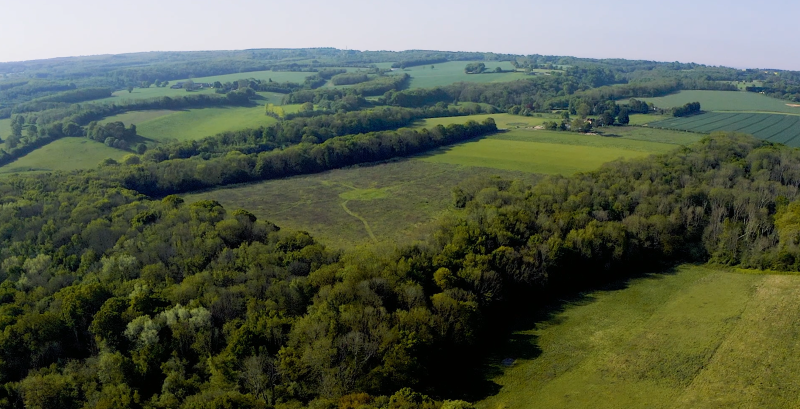
An aerial view of Woodsell Farm, Stalisfield taken by Fieldcraft Studios
A visionary entrepreneur, and Faversham resident (founder of Faversham Eye amongst other enterprises – the next issue is due out in November), Brian found himself with ‘more money than sense’ after selling Rochester Independent College a few years ago. He originally set up the school in 1984 with five students – by the time he sold it there were more than 300. ‘I got sick to death of teaching in England with all the regulations, the compliance – the actual quality of teaching seemed to be right down the list of requirements.’
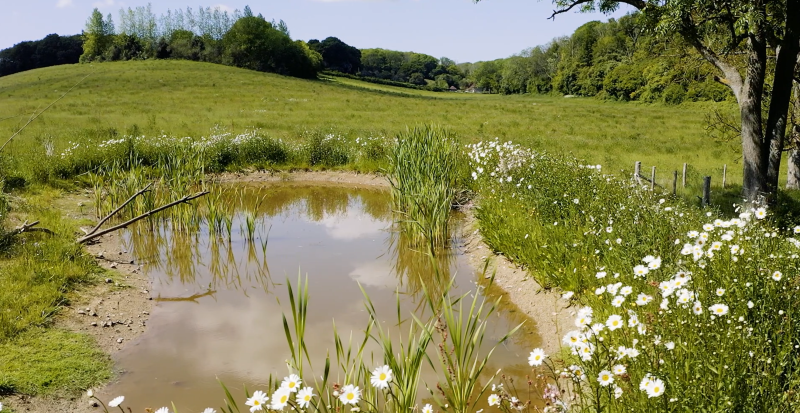
One of six new ponds that have been created to encourage wildlife
Brian’s first venture using his ‘ill-gotten’ gains, as he ruefully calls the proceeds from the college, was to set up a shipwrights apprenticeship scheme on Standard Quay in Faversham. He relocated the initiative to Cornwall after being kicked out by property developers. ‘We built a beautiful boat, but it was too far away.’ Sadly Covid struck a week after he launched a charter business, killing the business before it had even got started.
This was when he turned his mind to buying some land. ‘I wanted to divest the money I had left in a good way.’ Born on the Old Kent Road, as a child Brian was taken by his parents for day trips to the countryside. A lifelong nature lover, he was always upset to return to London.
Fortuitously, Woodsell came on the market. ‘I knew the area as I had bicycled round it for years.’
Woodsell’s wooded areas had been used for intensively rearing pheasants for shooting. ‘You had to fight your way through them. And of course they ate everything.’ The land was denuded of wildlife apart from a bank of well-established orchids and other wildflowers which had been left alone for a century.
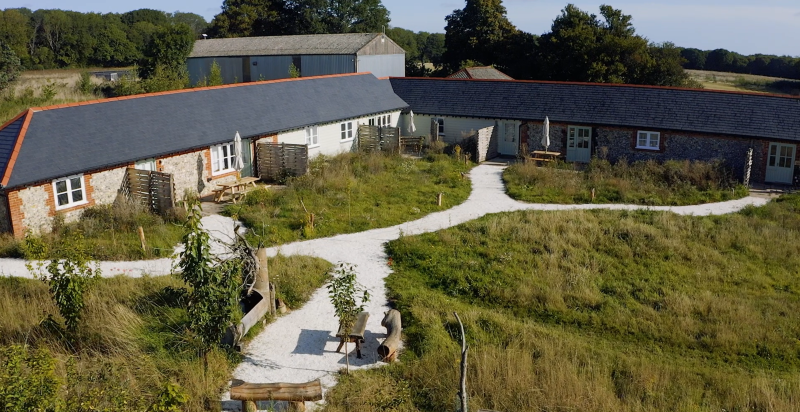
An aerial view of the restored stables
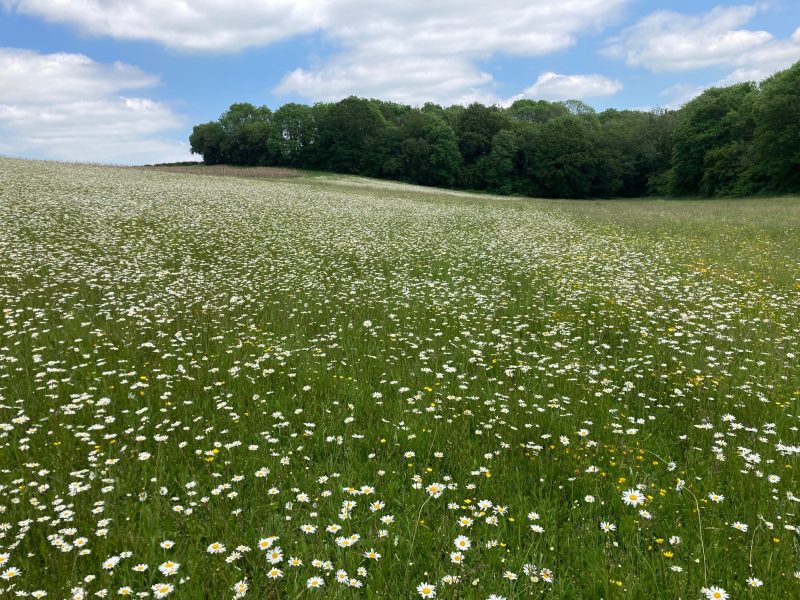
A sweeping view of the ravishing landscape
In just five years, the transformation is thrilling. Helen Renny, the Project Co-Ordinator explains that the farm lies between two sites owned by Kent Wildlife Trust. Spuckles Wood and Holbeam, creating an generous wildlife corridor. The soil is being carefully managed, improving the biodiversity and ecosystems. Six wildlife ponds have been created with carefully positioned tree branches as perches for birds to land and forage. One area is devoted to growing wildflower seeds commercially for Kent Wildflower Seeds. New woodland is being planted with native species. ‘The woodland floor is coming back to life.’ One of the many attractive features is the characterful bird hide on stilts made from fallen wood with a green living roof. The site abounds with birds including kestrels, barn owls, buzzards, red kites, sparrow hawks, goldfinches and a pair of linnets. Over 500 moths have been recorded and there are several bat and dormouse boxes. It is a blissful haven.

A view of the newly restored stables that are available to rent as accommodation with handmade furniture made using fallen wood
The cottages are tastefully decorated, incorporating furniture made with wood from the farm, and natural fabrics. There will be webcams enabling the renters to sit snugly inside watching the wildlife such as deer outside at night.

The nature trail
The accommodation only opened in this summer but already has had a steady stream of people from as far afield as California and Canada.
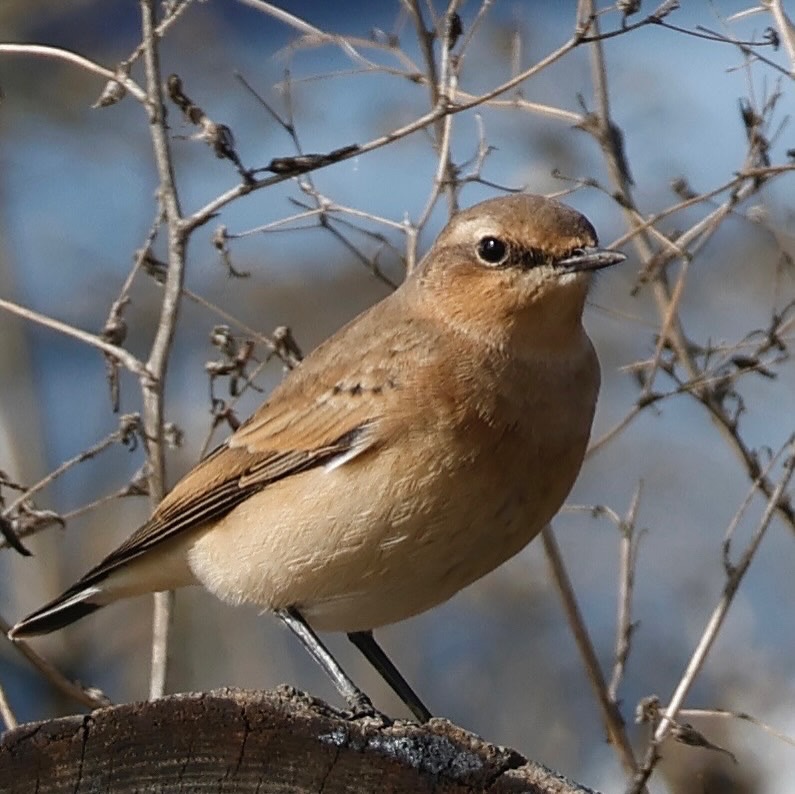
A wheatear
Architecture is another of Brian’s passions. ‘At the college, we restored about 18 listed buildings. At Woodsell, we had a long fight to get planning permission to convert the delapidated redundant farm buildings into rental accommodation.’
The farm is part of the Chalk to Coast scheme, Operation Turtle Dove, the Kent Downs National Landscape, and the Rewilding Network.
‘I didn’t have a vision of what I wanted to achieve. I thought let’s just start and see what happens,’ says Brian modestly. His ideas are unending – Francesca Baur, a teacher at Rochester Independent College. See Faversham Life article) who recently joined the project will be developing regenerative experiences both in the restored bull pen and creating a Forest Garden for growing natural fibres. dye and medicinal plants.
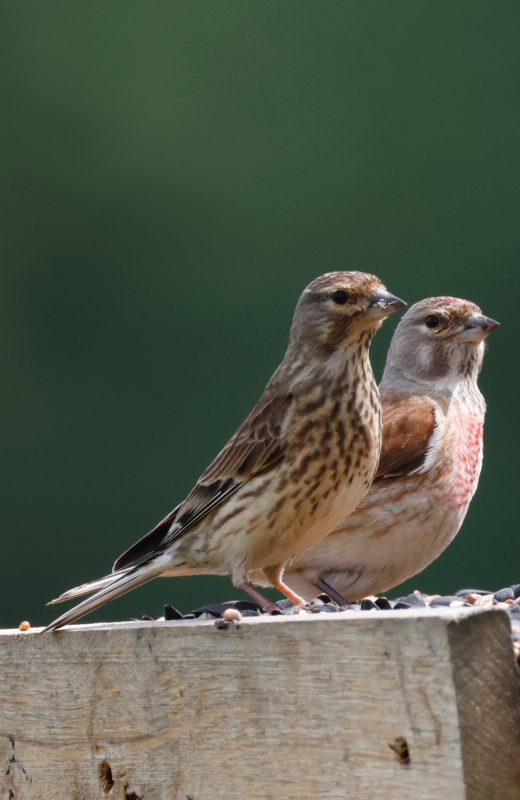
A pair of linnets, male and female
Brian has bequeathed the land to his charitable trust, the John Foran Foundation, retaining five acres and the cottages as a viable commercial business. ‘I wanted to ensure that the land was safe and wouldn’t be sold and turned back into a pheasant shoot.’
It is a highly exciting and commendable enterprise and one that surely will get better and better as the wildlife continues to return and the trees grow taller and taller.
Text: Amicia de Moubray. Photographs: Helen Renny, Neil Brown, Simon Berthal and Liohtan Pain. Drone Footage: Fieldcraft Studios.